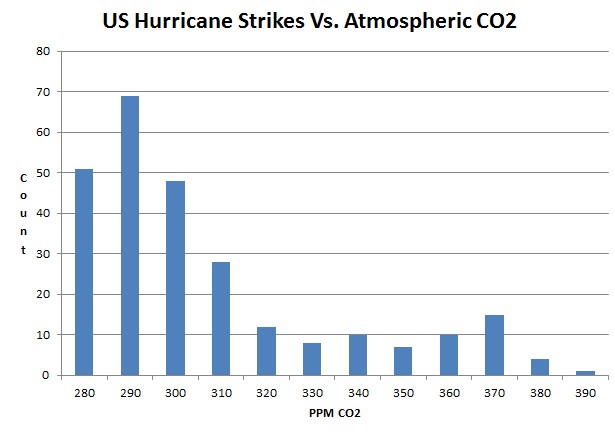1) Hurricane Harvey was downgraded to a tropical storm as soon as it hit land.
2) By any metric there are less and less powerful hurricanes now than at any time this century.
If "climate change" is making storms worse how come hurricanes stopped right
after they first said that? Did "climate change" stop, or were they wrong?
Or is there some third option that's not obvious?
Texas Hurricanes
- Bret (Cat 3) 1999
- Claudette (Cat 1) 2003
- Rita (Cat 2) 2005
- Humberto (Cat 1) 2007
- Dolly (Cat 1) 2008
- Ike (Cat 2) 2008
- Harvey (Cat 4/Tropical Storm) 2017
Ref:
"Chronological List of All Hurricanes which Affected the Continental United States:
1851-2012". Hurricane Research Division (2012), National Oceanic and Atmospheric Administration
After category 5 hurricane Katrina hit the US in 2005 it was one of the few hurricanes that hit that decade; the period 1984 to 1998 was the time of maximal hurricane activity, with many states getting more than one a year, but after the El Nino peak in 1998 they all but stopped for years, and when they resumed 5-10 years later they still only happened every few years in each state, not every year or two or more per years.
This is not worse or more extreme, it didn't even manage to maintain hurricane status once its hit land, it's just a storm.
After Katrina, just to keep up the idea hurricanes were worse not, you'd need 10 years of cat five hurricanes a year to establish a new "normal". To show it's worse that 12 years ago when Katrina hit you'd need two Cat 5 hurricanes a year for a decade.
One storm that's upgraded briefly to a hurricane but loses all its energy when it hits land and is downgraded from a hurricane does not count, it's not even close. While I have empathy with those suffering at the moment I question whether selling them buildings on a flood plain was ethical.

